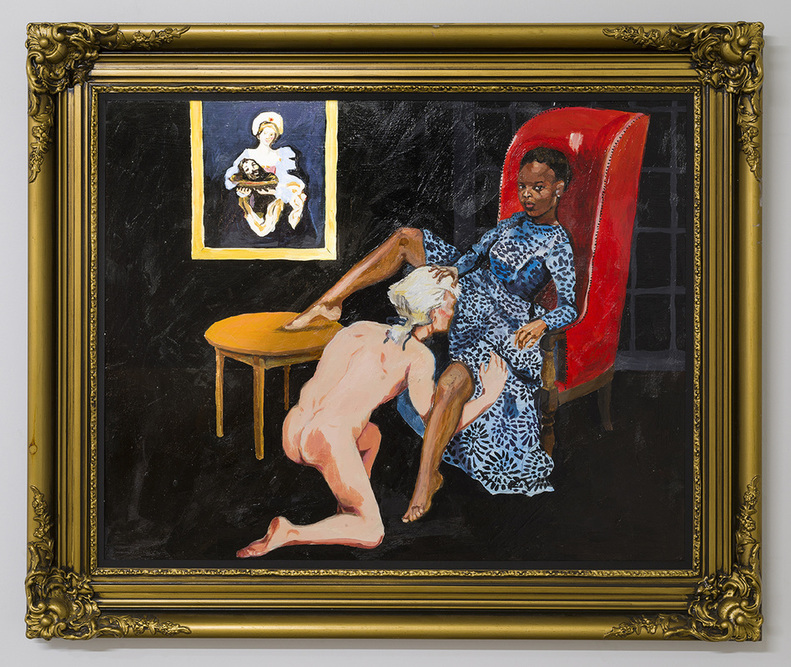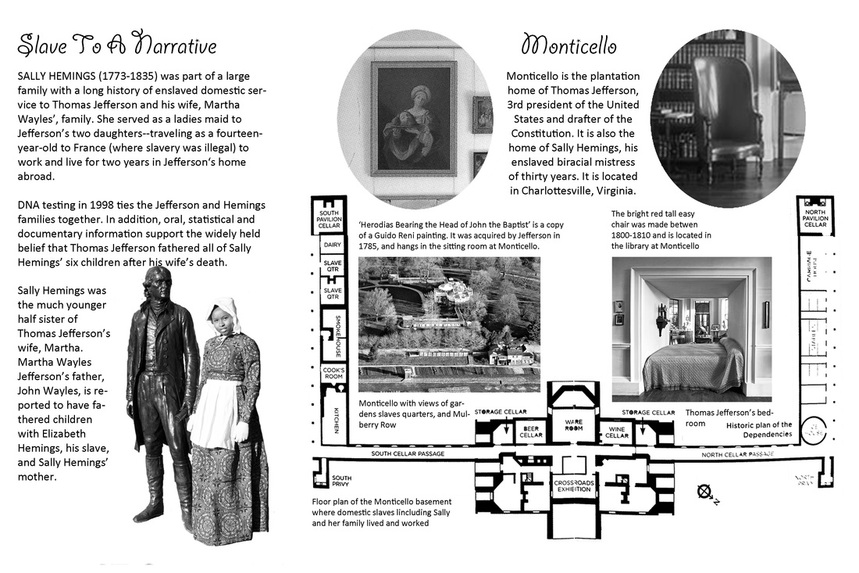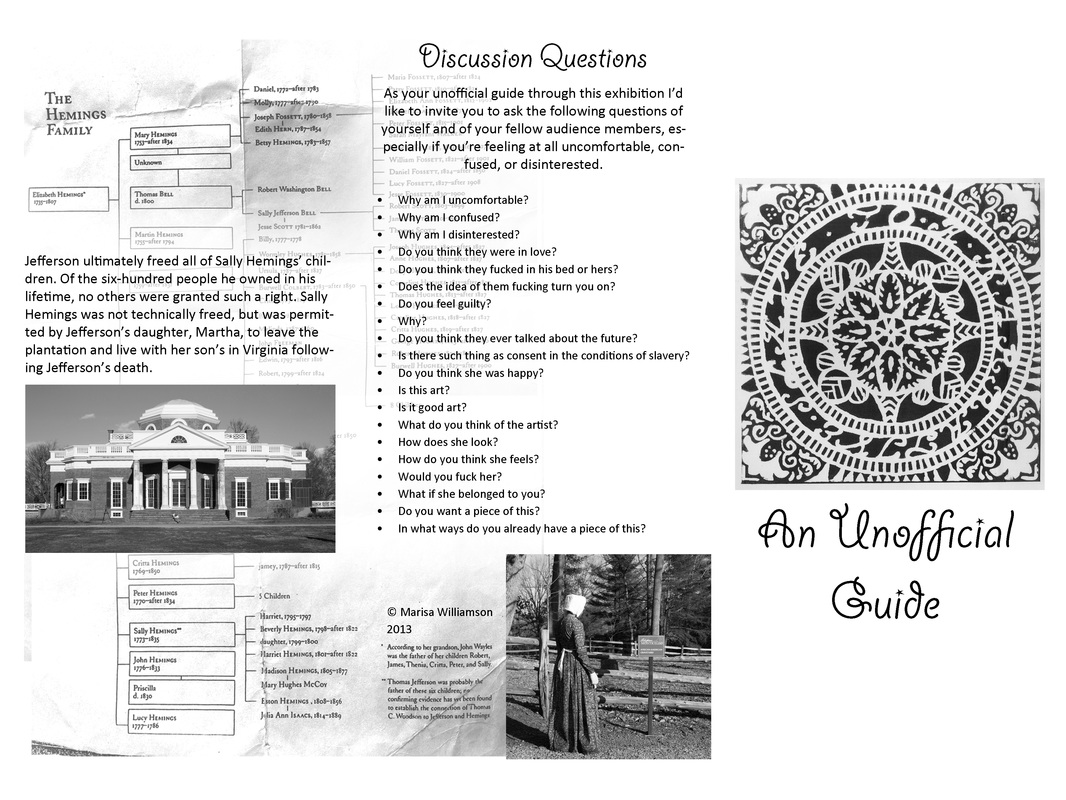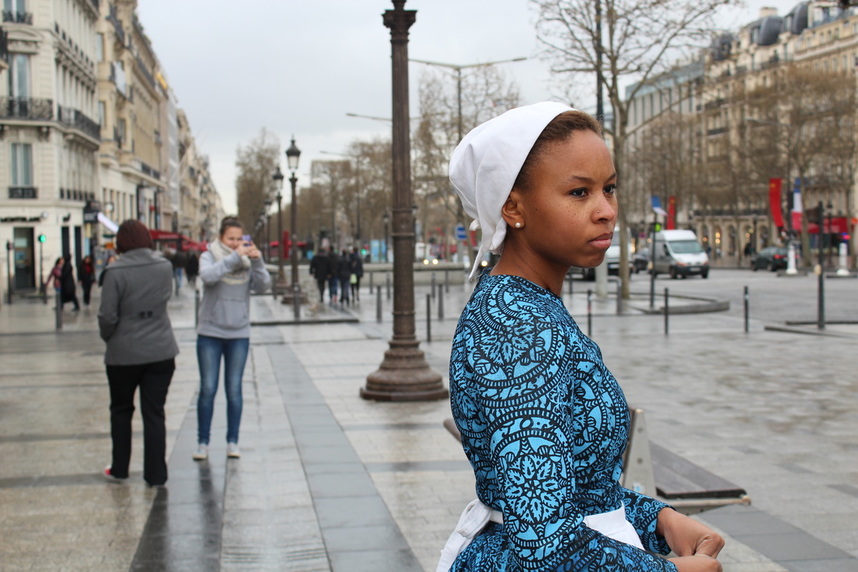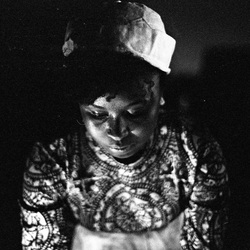VISUAL ART
Map
♦
By MARISA WILLIAMSON | 22 August 2016
Self Portrait as Sally Hemings, acrylic on panel, frame, 2013
Marisa Williamson's work is revelatory. Through her performances as Sally Hemings—Thomas Jefferson's slave and mistress of 40 years—she actively re-enacts and re-imagines the life of a historical figure whose silent legacy is often overlooked, and whose humanity is often circumscribed by one-dimensional characterizations. In forcing "confrontation between the black body that looks historical, the contemporary black woman miming history, and the audience, who must reconcile their own mimetic tendencies," Williamson asks: How is history understood? How is it felt? Through her work, Williamson seeks to "make history alive in people’s worlds," and to "make the black body an alive and immediate body in people’s worlds." The following is a curation of text, video, and images by Williamson that demonstrate her efforts to "reclaim and self-narrativise that which feels, even now, to be appropriated by victors."*
-Kayla E.
Map
|
Here // Now
|
|
Start where you are. Figure out what white people like. Figure out what white people like in black people. Do they like black people who help them. Black people who are smart but not too smart. Who can read but not too well. Black women who are soft--whose boundaries are penetrable--whose skin is smooth, whose looks are pleasing. Black people who are good at sports, singing, making things work, and helping things grow. Black people with respect--preferable more for others than themselves, but respectable nonetheless in their behavior, publicly, privately, but not intimately. Black bitches ready to fuck. Hard-working women who speak only when spoken to. Do they like asses or tits? Do they like to talk about themselves or their feelings? Their thoughts or their dreams? Figure out how they like their coffee. Figure out what they look for in a cover letter. Do they still look at standardized tests and GPAs? Are they looking to diversify? Do they want you to bring the pain? Or do they want you to take theirs out with the trash? Figure out what books they read and what movies they watch and which characters they identify with and feel intimidated by. Write a five paragraph essay about it. Perform with affect. Ask for it. But, not too directly, dramatically, desperately, enthusiastically. Give them what they want before they know they want it. Figure out how to be useful to them and perhaps you’ll find a use for yourself. Fuck. Fuck them. Get them to fuck you. Moan like you want it. Wonder if it’s love. Give birth to their children. Care for their seed. Hide your bitterness. Don’t make that face. Bite deeply, with eyes closed, into the sweetest and ripest parts. Learn to love the salty acidic taste to keep from gagging on it. Repeat until you find a way through, or out, or inside, or over.
|
|
There // Freedom
|
Excerpts from What Would Sally Do?, Performance at Monticello, 2013
An Unofficial Guide (Sides I & II), 8.5"x12" photocopy, 2013
Hemings in Paris, Avery Williamson (2013)
*All quotes excerpted from Marisa Williamson's interview with A. Will Brown in Studio International (2015).
|
Marisa Williamson is an NY-based artist, originally from Philadelphia. She received her B.A. in visual art from Harvard University and earned her M.F.A. from California Institute of the Arts in 2013. Her project as an artist is to explore and describe through performance, video, objects, and images the ways that soft technologies—“problem solving tools” like narrative, language, and myth, along with hard technologies like the camera, the digital moving image, and the web—facilitate the rendering and surrendering of the physical and psychological body.
Photo: Nathan Connelly (2015) |
